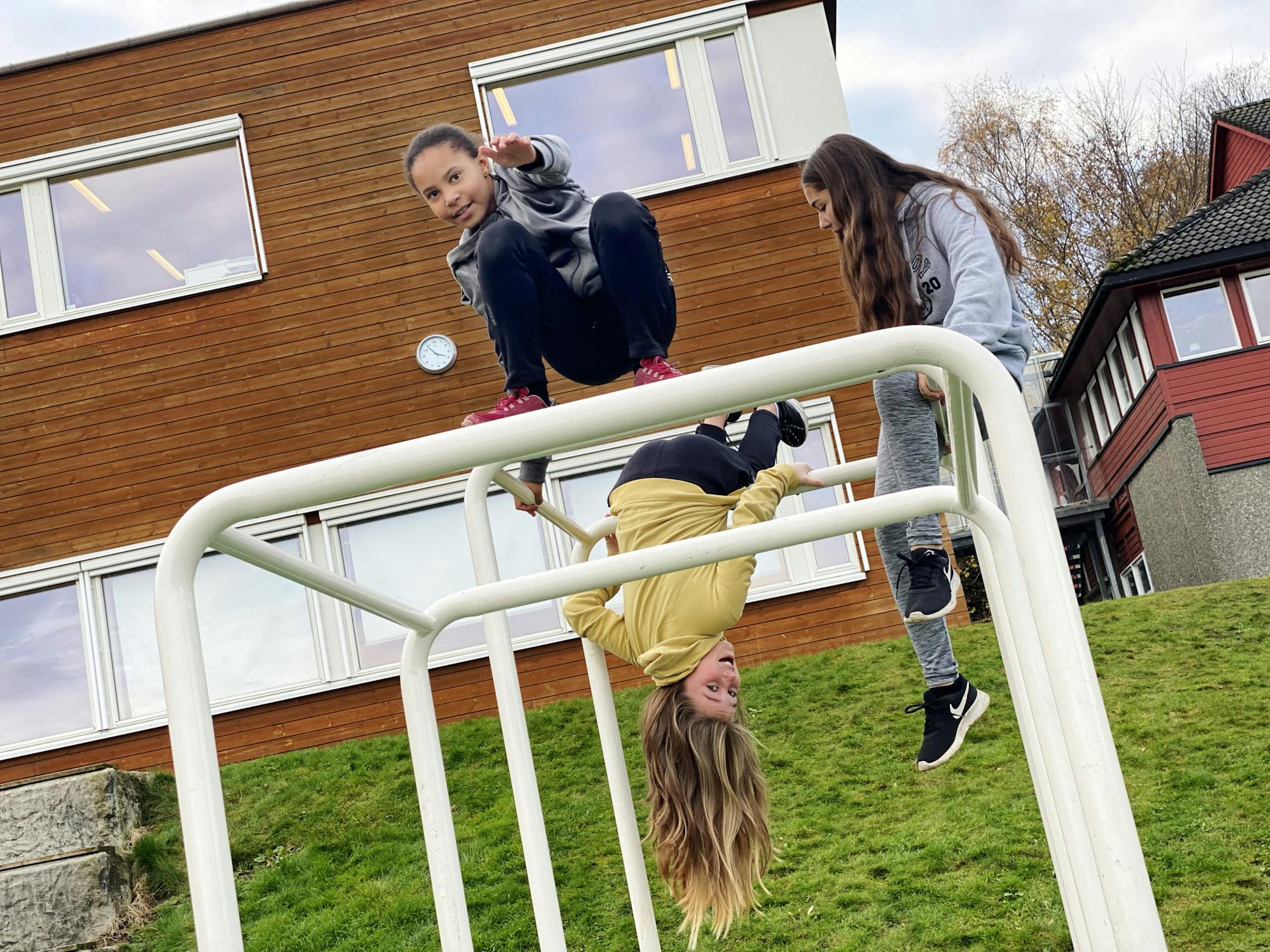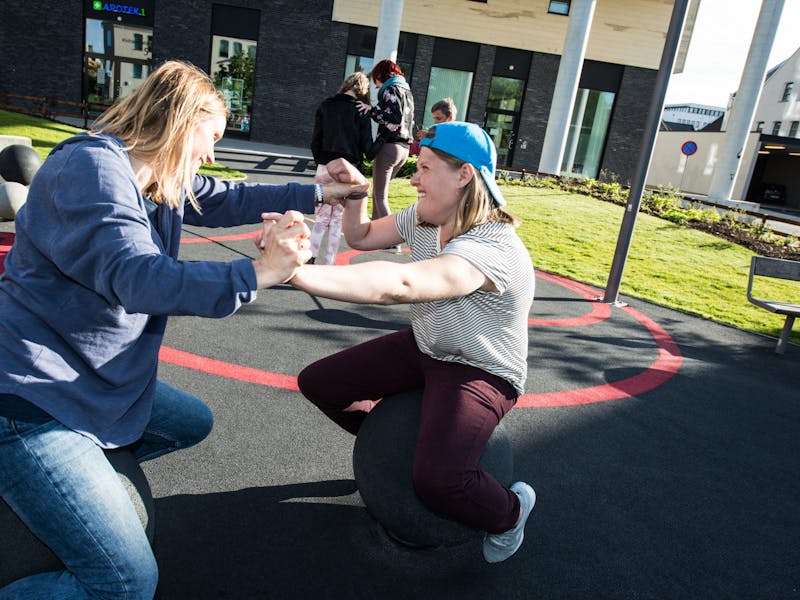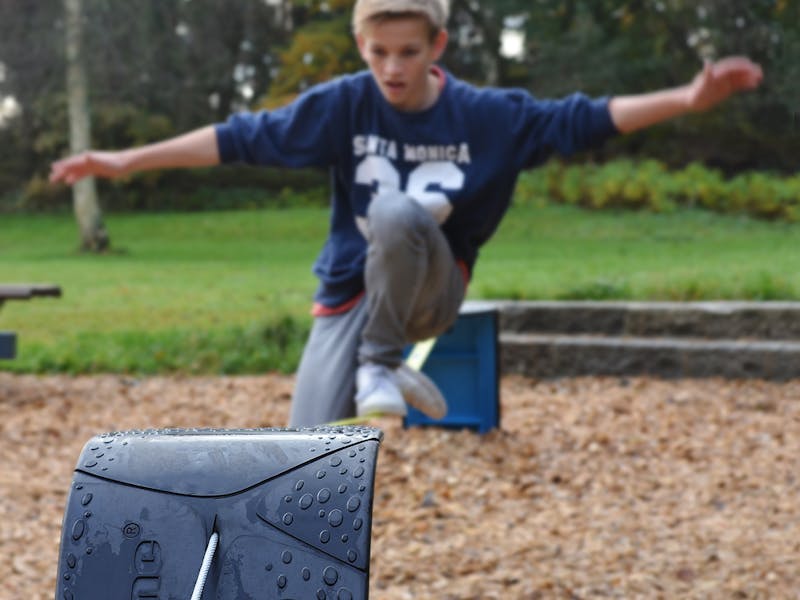GIRLS WANT TO BE ACTIVE
When teenage boys play football or go skateboarding, there are few girls who join in. Yet, studies show that girls actually want to be active just as much as boys. So, what can we do to motivate more girls to engage in play and activity?
Youth needs to be physically active, and that’s something we all agree on. At the same time, we know that many eventually drop out of organized sports activities, and the dropout rate is particularly high during middle school years. However, while boys often continue with self-organized activities, this isn’t as common among girls. In fact, the users of a typical soccer field or skatepark are approximately 80% boys and only 20% girls! Girls seem to prefer different activities.
THE GIRLS AT THE MOTOR SKILL PARK
At Finnøy in Stavanger Municipality, Norway, we encounter a group of girls out in the schoolyard. Here, they have a Motor Skill Park that encourages balance play and motor movements. The girls use the playground both during recess and after school hours.

– I love that we can play and get a little crazy during recess.
PRISKA 12 years old
SOCIAL MEETING PLACE
These girls appreciate the opportunity to be social while staying active. It’s precisely the social aspect that researchers emphasize when it comes to what girls value in self-organized physical activity. “During recess, we often hang out on the activity racks. Sometimes we challenge each other to do the weirdest or trickiest things without falling off,” the girls enthusiastically share.
Research also indicates that girls approach their activities differently than boys. While boys often enjoy competition, girls prefer engaging in activities without strict rules. While boys might be inspired by a field with lines and goals, girls generally desire more creative, free movement.

– I enjoy tumbling, swinging around, and trying new things on the activity racks.
ANNE 12 years old
Even though the girls are motivated to master new things, it’s not primarily about competing against others. ‘It’s fun when it’s a bit challenging; that way, we don’t get bored,’ says Anne. It’s as much play as it is physical activity, and the girls seem to enjoy it. This play elevates their heart rate, strengthens muscles, and prevents injuries, and they concentrate on mastering increasingly difficult challenges.
THE NEED FOR ACTIVITY SPACES FOR GIRLS
The more competitive the element in the activity, the greater the difference in interest seems to be between girls and boys. Soccer and ice rinks are the prime examples, where over 80% of users are boys. However, when looking at facilities that girls use as much as boys, they tend to be play areas.

LILLY 13 years old
– I like that we get better at gymnastics when we play here. And having a soft surface is great because we can do cartwheels and practice handstands.
THE MOTOR SKILL PARK:
ENCOURAGING ACHIEVEMENT
Motor Skill parks are designed to provide high stimulation of balance and motor skills through creative and free play. The concept facilitates both play and exercise in one.
The threshold for trying out the equipment should be low, while at the same time, it should be challenging enough for everyone, always, to find something new and exciting to master.
THIS IS A MOTOR SKILL PARK
The concept is Norwegian and developed by Rampline. Motor Skill Parks are set up in various sizes and designs. Rampline’s activity equipment is universally designed, which means they can be used in many ways by as many people as possible, regardless of age and functional level..

See our featured Motor Skill Park projects: Secondary schools, kindergartens, and Urban Spaces
POINTERS FOR CREATING AN ATTRACTIVE ACTIVITY AREA FOR GIRLS
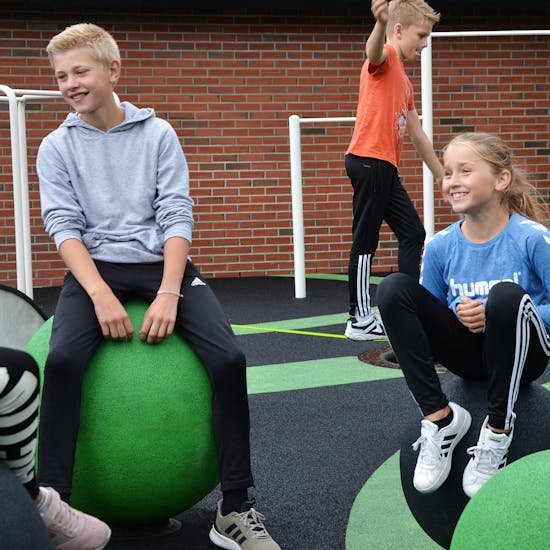
SOCIAL AND SAFE
Social interaction is essential for girls! Create an environment that allows for both activity and relaxation, enabling participation in various ways.
The optimal location for the facility is a central spot where people frequently pass by. It feels safer when the area is easily seen
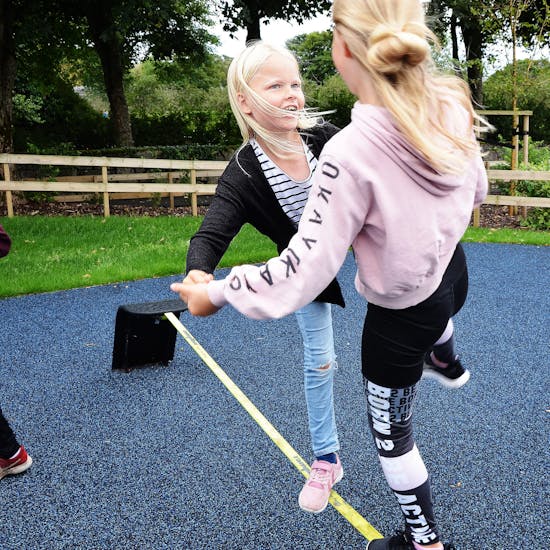
FOCUS ON PERSONAL DEVELOPMENT
Girls prefer activities that allow them to focus on their own personal development rather than competing with others.
Consider activities with opportunities for progression, such as climbing, balance exercises, or obstacle courses.
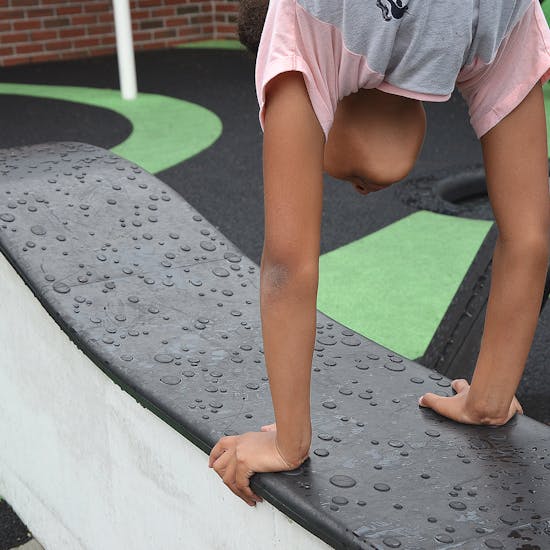
CREATIVE PLAY
Facilitate as much free play as possible. Creativity and unrestricted physical activity often appeal more to girls than, for example, a soccer field with defined boundaries and specific rules.
References:
